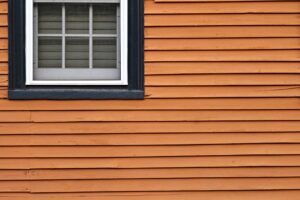
Siding Installation 101: Choosing the Right Material for Your Home
The exterior of your home not only defines its curb appeal but also serves as the first line of defense against harsh weather conditions. Siding plays a crucial role in protecting your home's structural integrity and insulating it from extreme temperatures. With the plethora of siding materials available, it can be challenging to choose the right one for your home. In this blog, we will explore the various siding materials and their benefits to help you make an informed decision for your siding installation project.
Understanding the Basics of Siding Materials
Before delving into the different siding materials, it's essential to understand the factors that you should consider when choosing the right material for your home. Key factors include:
- Durability: The siding material should be able to withstand harsh weather conditions and resist damage from moisture, insects, and other elements.
- Aesthetics: The siding material should complement your home's architectural style and contribute to its overall curb appeal.
- Maintenance: Consider the amount of maintenance required for the siding material, as some options may need more frequent upkeep than others.
- Cost: The siding material should fit within your budget while offering a good balance between price and performance.


Popular Siding Materials for Your Home
Choosing the right siding material for your home is a critical decision that can impact the appearance, durability, and energy efficiency of your home. When selecting a siding material to use for your home, it is important to compare the benefits and drawbacks of some of the most common siding materials. Here are some of the top picks for some of the best siding materials and their benefits:
Vinyl Siding
Vinyl siding is one of the most popular choices among homeowners due to its affordability, durability, and low maintenance requirements. It's available in a wide range of colors and styles, making it easy to find the perfect match for your home's design.
Benefits of Vinyl Siding
- Cost-effective: Vinyl siding is an affordable option, with installation costs lower than most other siding materials.
- Low maintenance: Vinyl siding requires minimal upkeep, as it doesn't need to be painted or stained.
- Durability: Vinyl siding is resistant to rot, insects, and moisture, making it a long-lasting option.
Fiber Cement Siding
Fiber cement siding is a composite material made from cement, sand, and cellulose fibers. It's known for its durability, resistance to damage, and ability to mimic the appearance of traditional wood siding.
Benefits of Fiber Cement Siding
- Fire resistance: Fiber cement siding is non-combustible, providing an added layer of protection for your home.
- Low maintenance: This siding material requires little maintenance, only needing to be repainted every 10-15 years.
- Versatility: Fiber cement siding is available in various styles, textures, and colors, allowing homeowners to customize their home's exterior.
Wood Siding
Wood siding is a classic choice that adds natural warmth and beauty to a home's exterior. It comes in various styles, such as clapboard, shingles, and board-and-batten, offering a timeless look for traditional or modern homes.
Benefits of Wood Siding
- Aesthetics: Wood siding offers a beautiful, natural look that can enhance your home's curb appeal.
- Insulation: Wood siding provides excellent insulation, helping to keep your home comfortable during extreme temperatures.
- Customizability: Wood siding can be painted or stained to suit your personal taste and complement your home's exterior.


Metal Siding
Metal siding is a durable, low-maintenance option that can be used for contemporary or industrial-style homes. Aluminum and steel are the most common metal siding materials, offering a sleek, modern look.
Benefits of Metal Siding
- Durability: Metal siding is resistant to fire, rot, insects, and moisture, ensuring a long-lasting exterior for your home.
- Low maintenance: Metal siding requires minimal upkeep, as it doesn't need to be painted or stained.
- Energy efficiency: Metal siding can reflect sunlight, helping to keep your home cooler during the summer months and reducing energy costs.
Cost of Siding Installation
When planning a siding installation project, it's important to consider the costs associated with different siding materials, as well as labor and any additional expenses that may arise. Below, we provide a general overview of the costs associated with each type of siding material.
Vinyl Siding
Vinyl siding is generally the most affordable option, with prices ranging from $2 to $7 per square foot for materials and installation. The cost varies depending on the quality, style, and thickness of the vinyl siding. Keep in mind that additional costs may be incurred for removing old siding or repairing damaged sections of the house.
Fiber Cement Siding
Fiber cement siding is a moderately priced option, with costs typically ranging from $6 to $12 per square foot for materials and installation. The price can vary depending on the style, texture, and quality of the fiber cement siding. As with vinyl siding, additional costs may arise for the removal of old siding or necessary repairs.
Wood Siding
Wood siding is generally more expensive than vinyl or fiber cement, with costs ranging from $7 to $15 per square foot for materials and installation. The price depends on the type of wood, style, and quality of the siding. Keep in mind that wood siding requires more frequent maintenance, which can increase long-term expenses.
Metal Siding
The cost of metal siding can vary greatly depending on the type of metal and the chosen finish. Prices typically range from $5 to $15 per square foot for materials and installation. Aluminum siding is usually more affordable than steel siding, but both options offer long-lasting durability and low maintenance requirements.


Additional Fees to Consider in Siding Installation
While the cost of siding materials is an essential factor to consider, it's also crucial to account for additional fees that may arise during the siding installation process. In this section, we will discuss some of these expenses, including labor fees, so you can have a more accurate understanding of your project's overall cost.
Labor Fees
Labor fees are a significant portion of the total siding installation cost. The rates can vary depending on the complexity of the project, the type of siding material, and the region in which you live. On average, labor fees for siding installation can range from $1 to $5 per square foot. However, it's essential to get quotes from multiple contractors to ensure you receive a fair and competitive labor rate for your project.
Siding Removal and Disposal
If you're replacing existing siding, you will need to factor in the cost of removal and disposal. The price for this service can range from $1,000 to $3,000 or more, depending on the size of your home and the type of siding being removed. Some contractors may include this cost in their overall quote, while others may charge it as a separate fee.
Repairing Damaged Sections
Before installing new siding, any damaged sections of the house must be repaired to ensure a proper installation. These repairs can include fixing rot, water damage, or insect damage. The cost of these repairs will vary depending on the extent of the damage and the materials required for the repairs. It's essential to have a thorough inspection of your home's exterior to identify any potential issues that may need to be addressed during the siding installation process.
Permits and Inspections
Depending on your local building codes and regulations, you may need to obtain permits or schedule inspections for your siding installation project. These fees can range from $100 to $500 or more, depending on your location and the scope of your project.
Additional Upgrades
If you're considering additional upgrades during your siding installation projects, such as new insulation, trim, or soffit and fascia, be prepared for the extra costs associated with these improvements. The price will depend on the materials used and the extent of the upgrades, so consult with your contractor to get an accurate estimate.
When planning a siding installation project, it's important to consider not only the cost of the siding material but also the additional fees associated with labor, removal and disposal, repairs, permits, and any desired upgrades. By thoroughly researching and accounting for all potential expenses, you can make an informed decision about your siding installation project and ensure a successful outcome that enhances your home's curb appeal, durability, and value.
The Most Popular Choice for Siding in 2023: Vinyl Siding
Vinyl siding continues to be a popular choice among homeowners in 2023. Its affordability, versatility, and low maintenance requirements have made it a go-to option for many. Let's explore the reasons why vinyl siding stands out as the most popular choice:
Affordability:
- Vinyl siding is known for its cost-effectiveness. It offers an attractive balance between price and quality, making it a budget-friendly option.
- Compared to other siding materials like fiber cement or wood, vinyl siding typically has a lower upfront cost, making it accessible to a wide range of homeowners.
Durability:
- Vinyl siding is designed to withstand various weather conditions, including rain, wind, and extreme temperatures.
- It is resistant to warping, cracking, fading, and pests, ensuring long-lasting performance and maintaining its appearance over time.
- Vinyl siding is engineered to resist moisture, making it less prone to rot or mold growth.
Versatility:
- Vinyl siding comes in a wide range of colors, textures, and profiles, allowing homeowners to achieve their desired look and match their home's architectural style.
- It can replicate the appearance of other materials, such as wood or stone, offering versatile design options without the associated maintenance requirements.
Low Maintenance:
- One of the main attractions of vinyl siding is its minimal maintenance needs. Unlike wood siding that requires periodic staining or painting, vinyl siding retains its color and does not require repainting.
- It can be easily cleaned with a hose or pressure washer, removing dirt and grime effortlessly.
- Vinyl siding does not attract insects or pests, reducing the need for pest control measures.
Energy Efficiency:
- Many vinyl siding options today come with insulation features, providing an added layer of energy efficiency to homes.
- Insulated vinyl siding helps improve thermal performance, reducing heat loss during colder months and heat gain during warmer months. This can contribute to energy savings and enhanced comfort indoors.
Eco-Friendly Options:
- Environmentally conscious homeowners can opt for eco-friendly vinyl siding options that are made from recycled materials and are recyclable at the end of their lifespan.
- These eco-friendly choices minimize the environmental impact and contribute to sustainable building practices.
Easy Installation:
- Vinyl siding is relatively easy to install compared to other siding materials, saving both time and labor costs during the installation process.
- With proper installation techniques and professional assistance, homeowners can have their vinyl siding installed efficiently and seamlessly.
Considering the affordability, durability, versatility, low maintenance, and energy efficiency of vinyl siding, it is no surprise that it remains the most popular choice for homeowners in 2023. However, it's important to assess your specific needs, budget, and personal preferences before making a final decision.


Consulting with a reputable siding contractor can provide valuable guidance and help you select the best siding option for your home. They can assess your requirements, discuss the pros and cons of different materials, and ensure a successful installation that enhances the beauty and functionality of your home's exterior.
Considering Natural Stone as a Siding Option
In addition to popular choices like vinyl siding, another option to consider for your home's exterior is natural stone siding. Natural stone offers a timeless and elegant look that can enhance the curb appeal of any property. Let's explore the benefits of natural stone siding and why it can be a good choice for your home:
Aesthetics:
- Natural stone siding provides a unique and luxurious appearance that can elevate the visual appeal of your home.
- The natural variations in color, texture, and patterns of stone create a visually striking and organic look.
- With a wide range of stone types available, including granite, limestone, slate, and more, you can find a stone that complements your home's architectural style and personal preferences.
Durability and Longevity:
- Natural stone is known for its exceptional durability, making it a long-lasting siding option.
- Stone siding can withstand harsh weather conditions, including high winds, heavy rains, and even extreme temperatures.
- It is resistant to fading, chipping, cracking, and warping, ensuring that it maintains its beauty and integrity over time.
- When properly maintained, natural stone siding can last for decades, providing a timeless and enduring aesthetic.
Low Maintenance:
- Natural stone siding requires minimal maintenance compared to other materials.
- Unlike wood siding that needs regular painting or sealing, stone siding does not require such upkeep.
- Stone is resistant to rot, mold, and insect damage, reducing the need for frequent repairs or treatments.
- Occasional cleaning with mild detergent and water is usually sufficient to keep the stone looking its best.
Energy Efficiency:
- Stone has excellent thermal properties that can contribute to the energy efficiency of your home.
- It has a high thermal mass, meaning it can absorb and retain heat, helping to stabilize indoor temperatures.
- This can lead to reduced energy consumption for heating and cooling, resulting in potential cost savings over time.
Sustainability:
- Natural stone is an eco-friendly choice for siding as it is a natural and abundant resource.
- Stone siding is highly durable, reducing the need for replacement and minimizing waste.
- Many stone types used for siding, such as limestone and slate, are sourced from sustainable quarries, ensuring responsible extraction practices.
Unique and Customized Appearance:
- Each piece of natural stone is distinct, giving your home a one-of-a-kind appearance.
- The natural variations in color, texture, and veining make every stone siding installation unique.
- With skilled craftsmanship, stone siding can be customized to create intricate designs or patterns, allowing you to personalize the look of your home.
While natural stone siding offers numerous benefits, it's important to consider some factors before making a decision. Stone siding can be a higher-cost option compared to other materials, and installation requires the expertise of experienced professionals. Additionally, the weight of natural stone may require additional structural support for your home.
By considering the aesthetics, durability, low maintenance, energy efficiency, sustainability, and unique appearance of natural stone siding, you can make an informed decision that suits your preferences and complements your home's architecture. Consult with a reputable contractor who specializes in stone siding to discuss your options, understand the installation process, and ensure a beautiful and enduring exterior for your home.


The Role of Climate When Choosing a Siding Material
When selecting a siding material for your home, it's important to consider the climate in your region. Different types of siding offer varying levels of protection and performance in different weather conditions. Here's why climate should play a key role in your siding material decision:
Extreme Temperatures:
In regions with extreme temperatures, such as very hot summers or frigid winters, it's crucial to choose a siding material that can withstand these conditions. Materials like vinyl and fiber cement are known for their ability to resist temperature fluctuations without warping or cracking, making them suitable for areas with extreme climates.
Humidity and Moisture:
If you live in a humid climate or an area prone to heavy rainfall, it's essential to select a siding material that is resistant to moisture damage. Materials like vinyl, fiber cement, and stone are moisture-resistant and can help protect your home from mold, rot, and decay.
High Winds and Storms:
Coastal regions and areas prone to high winds and storms require siding materials that can withstand strong gusts and impacts. Materials like fiber cement and natural stone are known for their durability and ability to withstand high winds, making them suitable choices for these regions.
Freezing Temperatures and Ice:
Regions that experience freezing temperatures and ice accumulation demand siding materials that can withstand the expansion and contraction caused by freeze-thaw cycles. Materials like vinyl and fiber cement have good resistance to cold temperatures and are less likely to crack or deteriorate due to freezing conditions.
Sun Exposure:
Areas with intense sunlight and high UV radiation levels can cause color fading and deterioration of certain siding materials. Materials like vinyl with UV-resistant coatings or metal siding with reflective finishes are better equipped to withstand prolonged sun exposure without significant damage.
Regular Maintenance:
Some siding materials may require more regular maintenance in specific climates. For instance, wood siding may need more frequent painting or staining in regions with harsh sun exposure or high humidity to prevent rot and decay. Consider the maintenance requirements of different siding materials and ensure they align with the time and effort you are willing to invest in upkeep.
Cost Considerations:
While climate should be a significant factor in your siding material choice, it's essential to find a balance between climate suitability and cost-effectiveness. Evaluate the cost of materials, installation, and long-term maintenance to choose a siding material that fits within your budget without compromising durability and performance.
It's recommended to consult with local contractors or professionals who have experience working in your specific region. They can provide insights into the best siding options based on your climate and help you make an informed decision.
Remember, there is no one-size-fits-all answer when it comes to choosing the best siding material for your home. Consider the climate factors in your area, assess the durability, maintenance requirements, and cost of different materials, and select the option that offers the best balance of protection, longevity, and affordability for your specific needs.


Proper Care for Your Siding: Ensuring Longevity and Beauty
Caring for your siding is essential to maintain its appearance, protect it from damage, and ensure its longevity. Different siding materials require specific care techniques. Here are some tips to properly care for common siding types:
Wood Shingles and Cedar Shakes:
Wood siding, such as wood shingles and cedar shakes, requires regular maintenance to preserve its natural beauty and prevent decay:
-
-
- Clean the siding annually using a soft-bristle brush or low-pressure washer to remove dirt, debris, and mildew.
- Inspect for any signs of damage, such as rot or insect infestation, and promptly address them to prevent further deterioration.
- Apply a protective sealant or stain every few years to enhance the siding's resistance to moisture, UV rays, and other environmental elements.
-
Composite Siding:
Composite siding, which includes materials like fiber cement or engineered wood, offers durability and low maintenance but still requires care:
-
-
- Clean the siding periodically using a mild detergent and water solution or a low-pressure washer to remove dirt and grime.
- Inspect for any cracks, chips, or damage and repair or replace affected sections as needed.
- Follow the manufacturer's guidelines for specific care instructions and recommended products, especially when it comes to painting or staining composite siding.
-
Vinyl Siding:
Vinyl siding is known for its low maintenance requirements, but some care practices can help prolong its lifespan and keep it looking its best:
-
-
- Regularly clean the siding using a soft brush or sponge, combined with a mild detergent and water.
- Rinse the siding thoroughly after cleaning to remove any soapy residue.
- Avoid using abrasive cleaners, steel wool, or stiff brushes that could scratch or damage the vinyl surface.
- Inspect the siding for any loose panels, cracks, or damage, and repair or replace them as necessary.
-
Batten Siding:
Batten siding, which features vertical boards with smaller strips known as battens, adds a distinctive charm to your home. Proper care can help maintain its appeal:
-
-
- Clean the siding using a soft-bristle brush or low-pressure washer to remove dirt and debris.
- Check for any loose or damaged battens and secure or replace them as needed.
- Apply a fresh coat of paint every few years to protect the siding and refresh its appearance.
-
In addition to these tips, it's essential to follow general siding care practices that apply to all types of siding:
- Regularly inspect your siding for signs of damage, such as cracks, chips, or loose sections. Promptly address any issues to prevent further deterioration.
- Keep vegetation trimmed and away from the siding to prevent moisture buildup and potential damage.
- Be cautious when using ladders or tools near the siding to avoid accidental damage.
- Consult the manufacturer's guidelines for specific care instructions and recommended products for your siding material.
Remember, each siding material has its own unique care requirements, so it's crucial to follow the manufacturer's recommendations to ensure you are properly caring for your specific type of siding. By providing the best care, you can help your siding maintain its beauty and functionality for a long time to come.

Leave a Reply